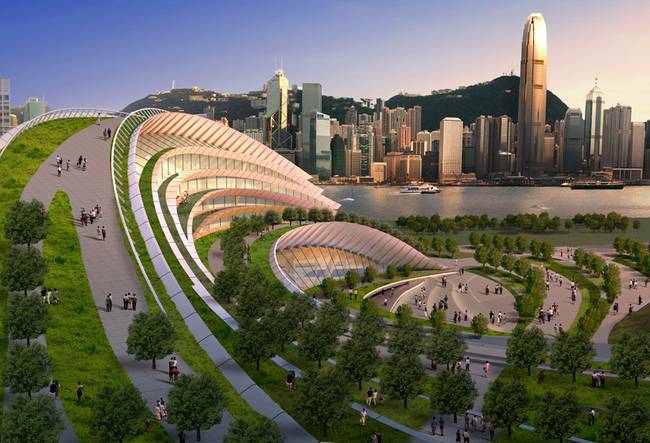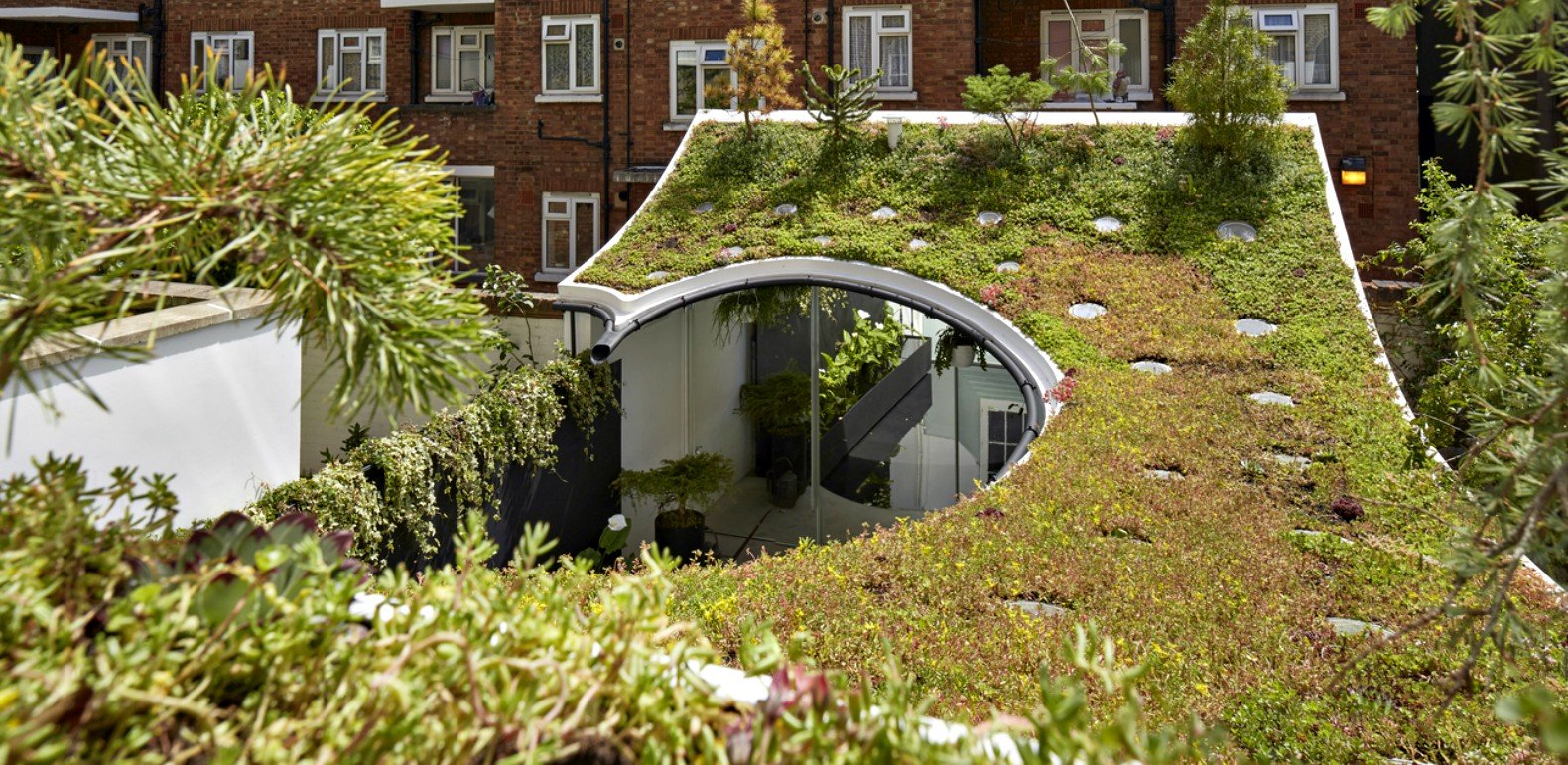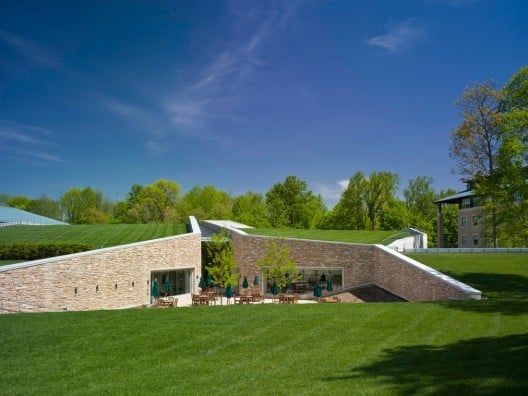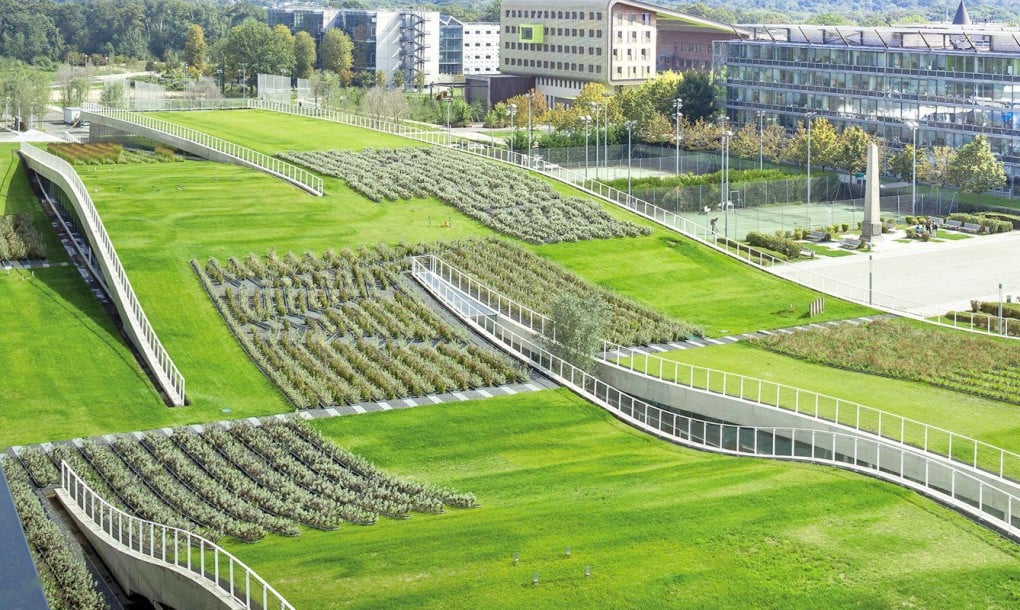The trend of sustainable architecture is happily growing in popularity. While there are many different techniques and designs incorporated in these more eco-friendly facilities, one of the most impactful is the vegetative roof system.
What Are Vegetative Roof Systems?
Vegetative roof systems or green roofs are also known as living roofs. As the name suggests, vegetative roofs are a design in which plants are used to create a green space on top of a building. Typical green roofs consist of multiple layers, including a durable waterproof foundation, a root management system, drainage layers, and some type of growing medium. While some people choose to grow vegetation in large containers on top of roofs, true green roofs are those that are physically part of the roofing system.
Vegetative roofs are already well known in many European countries thanks to their government’s efforts in education, promotion, and financial support. Unfortunately vegetative roofs remain fairly unpopular in North America, simply due to a lack of exposure to this design. The green roof is not only an innovative idea, but a time-tested method of bringing a significantly positive impact to both residential and commercial roofing.
Striving to build more eco-friendly and energy-efficient buildings is a priority as the negative environmental impacts of construction become more apparent. These green roofs offer such a range of different advantages it would be foolish to not consider them in remodels or new builds.

via inhabitat.com
How Can Cities Benefit From Vegetative Roof Systems?
Cities can really benefit from the water runoff control since storm-water drainage and treatment systems can easily be stressed after heavy precipitation. Since a building in an urban setting will largely be surrounded by concrete, the water control advantage of green roofs becomes very important.
Another city-specific issue vegetative roofs can help alleviate is Urban Heat Island (UHI) effect. The UHI effect describes the warmer temperatures found in urban areas caused by human activities. Cities have higher temperatures compared to rural settings, with these differences being most obvious in summer and winter. The primary cause of this phenomenon is a combination of the construction of buildings, reduction of natural land, and heat produced from energy usage. Vegetative roof systems are believed to be one of few effective solutions of equalizing the UHI effect.
Finally, bringing more plants and nature back in urban settings is easier done on commercial roofing than allocating space on the ground. While a green roof isn’t going to offer the same environmental benefits as land, it is a solution for helping support the environment while construction of buildings is needed. Striving to plant native plants on vegetative roofs is highly recommended as it offers a place for wildlife, insects and important pollinators to find natural food sources.
When it comes to new construction of commercial roofing, considering a vegetative roof system in place of traditional materials is highly recommended. Not to mention energy-efficient buildings that incorporate green roofs can benefit if they wish to achieve LEED certification.

via treehugger.com
What Are The Advantages Of Vegetative Roof Systems?
Here are 5 advantages to keep in mind when considering a vegetative roof.
-
Aids Water Runoff Control
Water runoff can be a troublesome problem for many businesses, especially those in urban area that often experience storms. The vegetative roof system naturally controls water by reducing the amount of runoff and absorbing contaminants in the water. This happens because the soil media used in construction will soak up some of the water as well as slow down how quickly watersheds from the roof.
-
Improves Air Quality
The correlation between an increase of vegetation improving air quality is already well-known. Green roofs not only help produce oxygen but also reduce air pollution. The area of the average commercial building’s roof is a large section of space for planting. While one building may not make a huge impact, if numerous buildings take on the development of green roofs the air quality will add up.
-
Provides Energy Savings All-Year
One of the biggest selling points of adopting a vegetative roof system are the energy savings, making this construction tempting for both commercial and residential roofs. Advanced vegetative roof designs act as a barrier between outdoor temperatures. This insulates the building from temperature swings in a couple different ways, including maintaining more consistent temperatures.
-
Lengthens Roof Membrane Lifespan
Similarly to how a vegetative roof insulates against outdoor temperatures, the design of these roofs also protects the roof membrane. Conventional roof membranes exposed to the elements will degrade more quickly. The membrane used in vegetative roofs won’t be exposed to UV rays or other environmental stresses.
-
Adds a Versatile Aesthetics
Perhaps not an advantage for a residential home, commercial buildings with a green roof can be a huge morale boost for office settings. While a typical roof is hardly a space to relax, a green roof can have seating added to it and become accessible to building tenants. Adding more vegetation in an urban setting has a number of benefits on it’s own, let alone as a quiet, recreational place for people.
Buildings in any region can find advantage in green roofs, but city environments are particularly good places to incorporate these living roof systems.

via inhabitat.com
Designing a Vegetative Roof System
The process of designing a green roof is not one to be taken lightly. Though the chances of a properly designed roof failing completely is slim, you naturally want to eliminate the chances of leaks, collapse, and other dangerous accidents from happening as much as possible. It is important to work with a professional experienced in designing extensive green roof systems appropriate for your building type and needs.
The first consideration when designing a vegetative roof system is what type will meet your expectations. There are three types of vegetative roofs – extensive, semi-intensive, and intensive. These three types differ in the depth of the medium used for plant growth.
Extensive green roofs are the most common type used and are classified as roofs with roughly 2″ to 6″ of growth medium. These roofs are naturally the most economical choice and offer quite a few of the benefits associated with green roofs, minus a hefty price tag or the potential concern of a very heavy roof. Extensive roof systems usually don’t need special irrigation or a reservoir layer either.
Semi-intensive green roofs are a great compromise if you wish for a more insulated green roof, but don’t want to go with an intensive system. Semi-intensive roofs are 6″ to 10″ deep and may also have a reservoir layer, though this often is a choice contractors will make on an individual basis. Semi-intensive green roofs are the second most common type, but naturally offer greater advantages and more versatility if you plan on planting your roof with larger greenery.

via archdaily.com
Intensive roof systems are fairly rare and are made up of any green roof 10″ and over in depth. These are the most substantial option when it comes to vegetative roofs and may not be appropriate for every building. Due to the weight of this type, buildings may need to be fortified. If a new building is being designed for construction and you wish for an intensive green roof system, this should be included in the blueprints. Intensive roof systems are the most advantages but also are more expensive. These system will also need irrigation and a very large reservoir.
Keep in mind that a properly designed roof system isn’t just some soil thrown onto a building’s rooftop, which would surely end in moisture damage and eventual failure. Whether you have a simple extensive roof or a vast intensive roof, all three types have the same basic components in their foundation.
The NRCA highly recommends any and all green roofs be built with a waterproof membrane to protect the roof, a protection course, a root barrier to control growth, a drainage layer to prevent oversaturation, insulation, an aeration layer, a moisture retention layer to reduce watering needs, filtration fabric, and finally finished with a growth medium (usually an engineered soil). As mentioned, a reservoir layer isn’t an absolute necessity in some roofs, though the NRCA does recommend it be included in any roof. This is a choice you will need to discuss with your roofing contractor.

via inhabitat.com
Maintaining Vegetative Roof Systems
Just like any aspect of building design, the success of a vegetative roof is directly related to whether the roof is properly maintained. Regular roofs that suffer from leaks and other types of damage often occur due to a lack of proper care. Green roofs can be quite resilient, but only when they are properly cared for.
The majority of vegetative roofing contractors will offer some type of maintenance package along with the installation. Naturally these packages are dependent on the contractor and after the coverage is over it is up to the building owner to keep up on roof care. Many building owners choose to hire a regular maintenance service to care for their green roofs. This is an excellent idea, but be sure that the service provider you choose is experienced with vegetative roof care. It is tempting to simply use your current groundskeeping service or gardeners, but this may lead to issues as green roofs do need some specialized care. However, you may be able to have your current groundskeeper learns what maintenance is needed for your new roof from the installer prior to them leaving.
The amount of maintenance your vegetative roof needs is dependent on the style of roof and your own expectations for how it will look. You can liken this to normal landscaping requirements. If you want a lush, green lawn-like roof it will need more care than a natural landscape. Keep in mind that the types of plants and shrubs you select also dictate the amount of care the roof will need. Building owners that want the advantages of a green roof but are comfortable with natural landscaping and native flora will find their roof require far less work.

via archdaily.com
Some green roof installers offer designs that allow for a very low-maintenance roof that will require little preening and watering. However, every green roof regardless of how easy to care for it may be, needs to have regular watering during its establishment period. The establishment period of a green roof is vital to the health of the new system. This period of time is the first full summer growing season after installation, so naturally this is dependent on when you’ve had the roof installed. This first growing season, and especially the first two months after installation, are when the roof is most sensitive. Without watering and attention it may cause plants to go dormant or completely die.
Watering may be down via an irrigation system, but if your installer used sedum cuttings it may need to be hand watered gently for the first few weeks. After the roof matures you’ll find it is much easier to care for, especially if it was designed and planted for your specific region. Aside from watering you will also want your groundskeeper to keep up on weeding, removal and control of insect pests, removal of debris, and deadheading certain flowers. Most of this is already common sense for gardeners, but with a green roof the landscaper will also need to know how to properly check moisture levels and how to check the irrigation system of the roof.
Depending on your region and irrigation systems, your roof may also need specialized winterizing. It is important to consult with the roof installer to determine what needs to be done with your particular roof in the event of freezing temperatures.
Vegetative roof systems are slowly but surely growing in popularity as a means of increasing green spaces and reducing energy costs in urban areas. The size of the average roofs on commercial buildings adds up to a significant amount of unused space just waiting to be utilized. With how much versatility there is in roof design, the potential for a very low-maintenance space, and the cost-effectiveness associated with green roof advantages, there is really no reason to not pursue this alternative roofing system.



